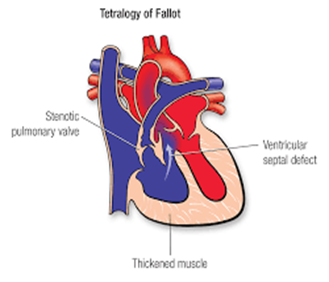The nurse is assessing a child with a cardiac problem. The child's extremities are cool with thready pulses, and urinary output is diminished. This is most suggestive of which of the following?
Increased afterload
Decreased cardiac output
Decreased contractility
increased stroke volume
The Correct Answer is B
Decreased cardiac output is a common consequence of various cardiac conditions in children. In this scenario, the child's cool extremities and thready pulses indicate poor peripheral perfusion, which can occur when the heart is not effectively pumping blood to meet the body's demands. Decreased urinary output is another sign of poor cardiac output, as reduced blood flow to the kidneys can result in decreased urine production.
The other options may contribute to decreased cardiac output, but they are not the primary factors indicated by the clinical findings:
A. Increased afterload: Increased afterload can make it more difficult for the heart to pump blood effectively, but it is not the primary cause of the symptoms described.
C. Decreased contractility: Decreased contractility can reduce the heart's ability to pump blood, contributing to decreased cardiac output, but it is not the primary factor indicated by the clinical findings.
D. Increased stroke volume: An increase in stroke volume typically results in improved cardiac output, not diminished cardiac output as seen in this scenario.
Nursing Test Bank
Naxlex Comprehensive Predictor Exams
Related Questions
Correct Answer is ["480"]
Explanation
To calculate the total volume the patient will receive, you can use the formula:
Total Volume = Rate x Time
In this case, the rate is 20 mL/hr, and the time is 24 hours. Now, calculate:
Total Volume = 20 mL/hr x 24 hr = 480 mL
So, the patient will receive a total of 480 mL of the 0.9% NS solution.
Correct Answer is B
Explanation
Tetralogy of Fallot is a congenital heart defect characterized by four specific abnormalities:
Ventricular septal defect (VSD): This is a hole in the wall (septum) between the two lower chambers (ventricles) of the heart.
Overriding aorta: The aorta is positioned over both the left and right ventricles, which allows oxygen-poor (deoxygenated) blood from the right ventricle to be pumped into the aorta and to the body.
Pulmonic stenosis (PS): This is a narrowing of the pulmonary valve or artery that restricts blood flow from the right ventricle to the lungs.
Right ventricular hypertrophy: The right ventricle becomes thicker and more muscular as it works harder to pump blood against the narrowed pulmonary valve or artery.
Options A, C, and D describe different congenital heart conditions and defects, but they are not associated with Tetralogy of Fallot:
A. Coarctation of aorta, aortic valve stenosis, mitral valve stenosis, and patent ductus arteriosus are not part of the constellation of defects seen in the Tetralogy of Fallot.
C. Describing the aorta exiting from the right ventricle and pulmonary artery exiting from the left ventricle with two noncommunicating circulations is characteristic of transposition of the great arteries, not Tetralogy of Fallot.
D. Tricuspid valve atresia, atrial septal defect, ventricular septal defect, and hypoplastic right ventricle describe a different congenital heart condition, not Tetralogy of Fallot.

Whether you are a student looking to ace your exams or a practicing nurse seeking to enhance your expertise , our nursing education contents will empower you with the confidence and competence to make a difference in the lives of patients and become a respected leader in the healthcare field.
Visit Naxlex, invest in your future and unlock endless possibilities with our unparalleled nursing education contents today
Report Wrong Answer on the Current Question
Do you disagree with the answer? If yes, what is your expected answer? Explain.
Kindly be descriptive with the issue you are facing.
